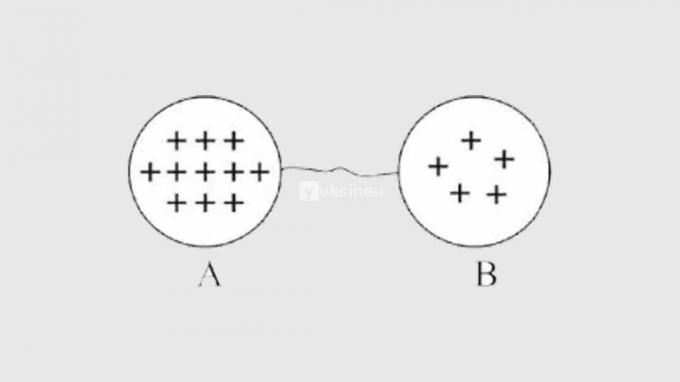Dynamic Electricity: Definition, Formulas, Example Problems
Has it ever crossed your mind that when you use electronic items like irons, or toy cars like tamiyas, how do they work?
It is one of the uses of dynamic electricity in everyday life. What is dynamic electricity? How does it work? let's discuss in full understanding, formulas, and examples of dynamic electricity problems.
Table of contents
Understanding Dynamic Electricity
Dynamic electricity is electricity that changes or can move and is often referred to as electric current.
This electric current comes from the continuous flow of electrons from the negative pole to positive pole, from high potential to low potential from a potential difference source (voltage).
Objects with more positive electric charges have higher potentials, while objects with more negative charges have lower potentials.
Well, two places that have a potential difference can cause an electric current to appear. With a note that both are connected by a conductor. Potential difference is usually referred to as voltage.
Electric current is divided into 2 types, namely current AC (back and forth) and DC (unidirectional), generally electric current passes through a conducting wire per unit time, for the amount of electric current that flows in a certain time is called electric current strength (i).
The incoming current in a branched circuit will be equal to the outgoing current, while in a series circuit the current will continue to be the same at each end of the resistance, all of this is in accordance with Kirchoff's Law.
The larger the voltage source, the greater the current that will flow. Meanwhile, if the resistance is enlarged, it will make the current flow decrease. As described in Ohm's Law.

The picture above says A has a higher potential than B, The electric current occurs from A to B, occurs because of the potential balancing effort between A and B.
The electric current seems to be a positive charge current, from high to low potential. The fact is that a positive electric charge cannot move, but a negative (electron) can. Here, YukSinau.id presents the dynamic electric formula.
Dynamic Electric Formula
Electric Current Strong Formula (I)
Electric current occurs when there is a transfer of electrons as described above. Both charged objects, when connected to a conductor, will produce an electric current.
The electric current is symbolized by the letter I, has units Ampere (A), the formula is:
I = Q/t
Information:
- I = electric current (A)
- Q = amount of electric charge (Coulomb)
- t = time interval (s)
Potential Difference Formula or Voltage Source (V)
Based on the description above, electric current has a definition of the number of electrons that move in a certain time.
The potential difference will cause the transfer of electrons, the amount of electrical energy required to drain each electric charge from the end of the conductor is called electric voltage or potential difference.
A voltage or potential difference source has the symbol V, with units Volt. Mathematically has the formula:
V = W / Q
Information:
- V = potential difference or voltage source (Volts)
- W = energy (Joule)
- Q = charge (Coulomb)
Electric resistance formula (R)
The resistance or resistor is symbolized by R, in ohms, has the formula:
R =. l / A
Information:
- R = electrical resistance (ohms)
- = specific resistance (ohm.mm2/m)
- A = cross-sectional area of the wire (m2)
ohm's law formula
Ohm's law is a law that relates the strength of electric current, potential difference, and resistance. With the formula:
I = V / R or R = V / I, or V = I. R
Read the symbol description in the previous formula symbol description.
Example of Dynamic Electricity Problem
1. The current in a conductor is 10 A. How many minutes will it take for a charge of 9,600 C to flow through the cross section?
Answer:
Is known:
I = 10 A
Q = 9,600 C
Asked:
t…?
Solution:
I = Q/t
t = Q / I = 9,600 C / 10 A = 960 s or 16 minutes.
2. A piece of wire is connected across a potential difference of 12 V. If the current through the wire is 4 A, what is the resistance of the wire?
Answer:
Is known:
V = 12 Volts
I = 4 A
Asked:
R….?
Solution:
I = V / R
R = V / I = 12 V / 4 A = 3 Ohms.
That's a complete discussion of dynamic electricity, hopefully with this article you will understand the meaning of dynamic electricity, formulas, and understand examples of dynamic electricity problems. May be useful.
